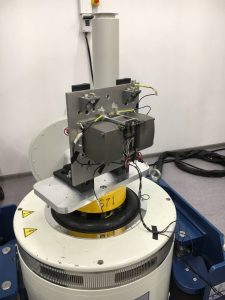SteamJet space propulsion systems, based on water, undergo a thorough evaluation process designed to meet the highest performance standards before being delivered to customers. At SteamJet, our commitment is to ensure that every step is meticulously carried out, from sophisticated simulations to real-world testing.
Our satellite thruster technology has been thoroughly tested across various missions, including partnerships with Above the Clouds and PHi Demo missions, to confirm their ability to tackle space challenges. These tests are crucial in supporting small satellite developers seeking reliable, sustainable propulsion solutions.
Starting with the initial PHi Demo mission in collaboration with the Mohammed bin Rashid Space Centre (MBRSC), launched aboard the Soyuz rocket, to the mission with the SatRevolution team aboard the Virgin Orbit launch vehicle, every mission has offered essential insights. This experience helped us refine and validate the effectiveness of our propulsion technology.
SteamJet thrusters undergo multiple testing phases to guarantee that they are entirely ready for the space mission.
Operational Condition Simulation
 Satellite thruster systems have to be tested to ensure their reliability. Thus, it is crucial to simulate operational conditions during the development process. There are multiple external factors that affect the thruster at the launch, which are outlined in the launch vehicle manual. Potential issues involve vibrations, acceleration and the abrupt forces on both first and second stages. A vibrodynamic test bench simulates these vibrations, reproducing the unique characteristics of the launch vehicle.
Satellite thruster systems have to be tested to ensure their reliability. Thus, it is crucial to simulate operational conditions during the development process. There are multiple external factors that affect the thruster at the launch, which are outlined in the launch vehicle manual. Potential issues involve vibrations, acceleration and the abrupt forces on both first and second stages. A vibrodynamic test bench simulates these vibrations, reproducing the unique characteristics of the launch vehicle.
Initially, a qualification copy is tested on a vibrodynamic bench to apply stress 20-40% higher than what the thruster is expected to experience on the launch vehicle itself. The final product intended for the customer, undergoes an additional 12-20% overload.
In orbit, space propulsion systems face a set of challenges, namely temperature fluctuations and low pressure. The thrusters transition from extreme heat to cold 16 times a day, but the water inside must remain sealed and functional. A thermal vacuum chamber is used to simulate the space environment, cycling through these extreme conditions.
Once the vibration and thermal vacuum tests are completed, it is possible to confirm that thrusters will perform reliably. Key parameters must not be compromised, namely thrust, specific impulse, and seal integrity. Each thruster is certified to leave the lab after ensuring that it can withstand all these factors.
All the reports and functional tests are reviewed by the customer to verify that the propulsion technology performed predictably and within the technically justified tolerances under operational conditions.
Integration into Satellite
Once a satellite thruster has passed all qualification phases, it’s ready to be integrated into the small satellite platform. After it is integrated into the satellite, the customer repeats all the same steps. Teams of both missions, the PHi Demo mission and “Above the Cloud”, received fully functional and tested thrusters. They integrated thrusters into their equipment and successfully performed all the tests.
Our team participated in the acceptance process, we reviewed all the reports and test forms with the mission system engineers. We also took part and provided training in the thruster fueling, either at the launch site or in the laboratory.
SteamJet space propulsion systems successfully passed every testing stage in both missions, the PHi Demo mission and the “Above the Cloud” mission. Our water-based propulsion technology demonstrated exceptional reliability, and small satellite developers received fully functional and high-quality thrusters that meet all the performance standards.
We are dedicated to quality and accuracy, these missions showcase SteamJet’s capacity to provide dependable, advanced satellite thrusters that are fully operational in space.
More technical information regarding the thrusters is available on our website. This includes specifications, performance data, and recent test results. Steam TunaCan Thruster and Steam Thruster One. Discover how SteamJet innovations are shaping the future of sustainable satellite propulsion.
